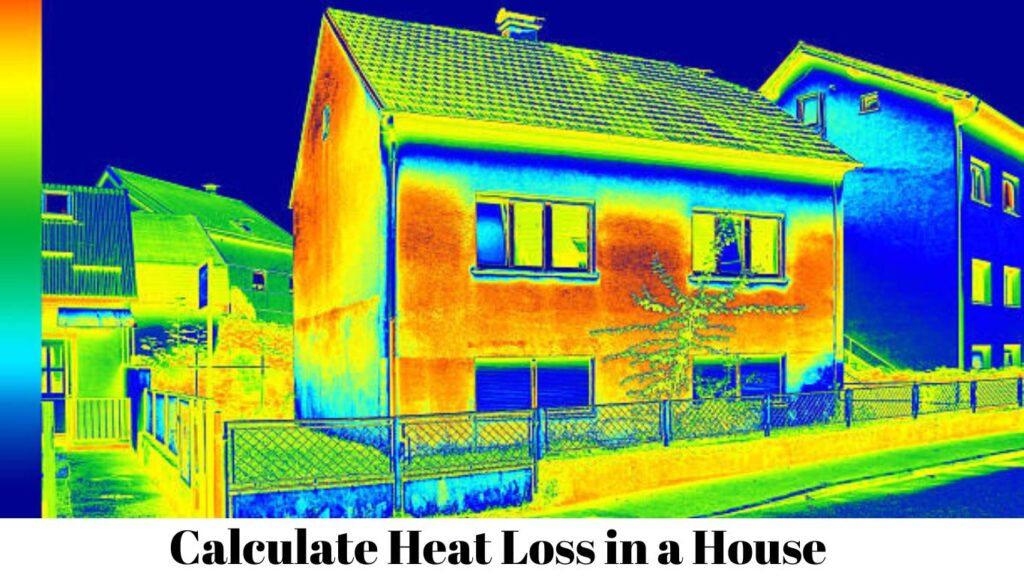
Calculating heat loss in a house is an essential step in ensuring that your home is energy-efficient and comfortable. By determining the amount of heat lost through walls, floors, and ceilings, you can identify areas where your home may be losing heat and take steps to address them.
One of the first steps in calculating heat loss is to determine the design temperature of your home. This is the difference between the ideal temperature inside your home and the average temperature that your geographic region never goes below in the winter. Once you have determined your design temperature, you can use it to calculate the temperature difference between the inside and outside of your home, which is a key factor in determining heat loss.
There are several factors that can contribute to heat loss in a house, including the type of insulation used, the quality of windows and doors, and the presence of drafts. By taking the time to calculate heat loss in your home, you can identify areas where improvements can be made to increase energy efficiency and reduce heating costs.
Understanding Heat Loss
When it comes to keeping your home warm and cosy, understanding heat loss is key. Heat loss occurs when heat escapes from your home, either through the walls, windows, roof, or other areas. By understanding the factors that affect heat loss, you can take steps to reduce it and keep your home warm and energy-efficient.
Factors Affecting Heat Loss
Several factors can affect the amount of heat that is lost from your home. These include:
- Temperature Difference: The greater the difference in temperature between the inside and outside of your home, the greater the heat loss will be.
- Surface Area: The larger the surface area of your home, the more heat will be lost.
- Material: Different materials have different thermal conductivities, which can affect the rate of heat loss. For example, materials with a higher thermal conductivity, such as metal, will conduct heat more easily than materials with a lower thermal conductivity, such as wood.
- Insulation: Insulation helps to reduce heat loss by providing a barrier between the inside and outside of your home. The better the insulation, the less heat will be lost.
- Air Leakage: Air leakage can occur through gaps and cracks in your home’s walls, windows, and doors. This can allow warm air to escape and cold air to enter, increasing heat loss.
By considering these factors, you can take steps to reduce heat loss in your home. For example, adding insulation to your walls, roof, and floors can help to reduce heat loss, while sealing gaps and cracks can help to prevent air leakage. Additionally, choosing energy-efficient windows and doors can help to reduce heat loss and improve the overall energy efficiency of your home.
Methods for Calculating Heat Loss
Calculating heat loss in a house is an essential step in ensuring that the heating system is efficient and cost-effective. There are several methods you can use to calculate heat loss, including manual calculations and using software or online tools.
Manual Calculations
Manual calculations involve using mathematical formulas to determine the amount of heat loss in your home. This method requires you to measure the dimensions of your home, the insulation levels, and the U-values of the walls, windows, and doors. You can then use these measurements to calculate the heat loss in your home.
The formula for calculating heat loss is:
Heat Loss = U-value x Area x Temperature Difference
Where U-value is the thermal conductivity of the material, Area is the surface area of the material, and Temperature Difference is the difference between the indoor and outdoor temperatures.
Manual calculations can be time-consuming and require a good understanding of thermal physics. However, they can provide accurate results if done correctly.
Using Software or Online Tools
Using software or online tools is a more convenient and faster way to calculate heat loss in your home. These tools use complex algorithms to calculate heat loss based on the dimensions of your home, the insulation levels, and the U-values of the walls, windows, and doors.
Some of the popular software and online tools for calculating heat loss include:
- HeatGeek Heat Loss Calculator
- Warmup Heat Loss Calculator
These tools are user-friendly and can provide accurate results in a matter of minutes. However, they may require you to input accurate measurements for your home to get the best results.
In conclusion, calculating heat loss in a house is essential for ensuring energy efficiency and cost-effectiveness. You can use manual calculations or software and online tools to determine the heat loss in your home. Choose the method that suits your needs and preferences.
Measuring Heat Loss
When it comes to measuring heat loss in your house, there are a couple of methods that professionals use to get accurate results. These methods are Thermal Imaging and Blower Door Test.
Thermal Imaging
Thermal imaging is a technique that uses infrared cameras to detect temperature differences in the walls, floors, and ceilings of your home. This method is useful because it can identify areas where heat is escaping and where insulation may be lacking. The infrared camera produces a visual image of the temperature differences, allowing professionals to identify areas that need improvement.
Blower Door Test
Another method used to measure heat loss is the blower door test. This test involves sealing all the doors and windows in your home and then using a fan to blow air out of the house. This creates a negative pressure inside your home, which makes it easier to detect air leaks. Professionals use a device called a blower door to measure the amount of air that is leaking out of your home.
During the blower door test, professionals will also use smoke pencils to identify areas where air is leaking. These pencils release a small amount of smoke, which helps to identify the source of the air leaks. Once the leaks are identified, professionals can take steps to seal them up and reduce heat loss.
By using these methods, professionals can accurately measure the heat loss in your home and identify areas that need improvement. This can help you to save money on your energy bills and make your home more comfortable.
Frequently Asked Questions
How do I calculate heat loss in my house?
To calculate heat loss in your house, you need to determine the difference between the ideal temperature inside your home and the average temperature that your geographic region never goes below in the winter. This is known as the Delta T. You also need to determine the surface area of the room that you intend to heat. Once you have these values, you can use the formula to calculate heat loss.
What is the formula for calculating heat loss?
The formula for calculating heat loss is Heat Loss (BTUs/h) = Area (ft2) × Temperature Difference (°F) ÷ R-Value(ft2 ° F h/BTUs). The area refers to the surface area of the room you intend to heat, the temperature difference is the Delta T, and the R-Value is the resistance of the materials used in the construction of the room.
How can I use a simple calculator to determine heat loss?
You can use an online heat loss calculator to determine the heat loss in your house. These calculators take into account the Delta T, the surface area of the room, and the R-Value of the materials used in the construction of the room.
What is the average heat loss of a UK house?
The average heat loss of a UK house depends on several factors, including the size of the house, the materials used in the construction of the house, and the insulation of the house. However, the Energy Saving Trust estimates that the average heat loss in a UK house is around 25%.
How much heat is lost through the fabric of a house?
The amount of heat lost through the fabric of a house depends on the insulation of the house and the materials used in the construction of the house. However, the Energy Saving Trust estimates that around 35% of heat is lost through the walls, 25% through the roof, 10% through the floor, and 25% through windows and doors.
How do I calculate heat loss per square metre of my house?
To calculate heat loss per square metre of your house, you need to divide the total heat loss of your house by the total surface area of your house. This will give you the heat loss per square metre.
